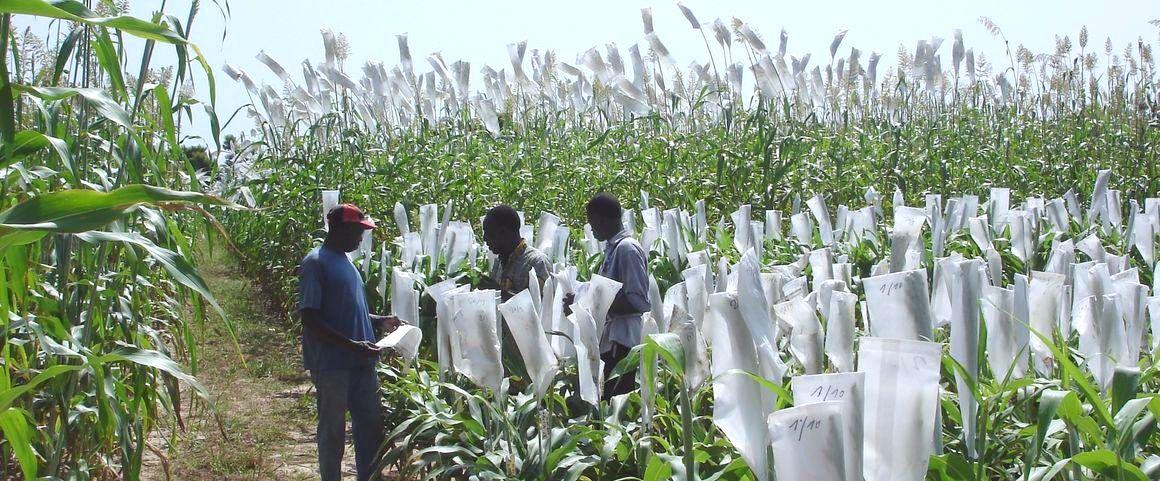Event 22 December 2025
- Home
- Press area
- Press releases
- Global Sorghum Conference
The scientific and agricultural communities are looking at sorghum as a way to address drought

Field experimentation for varietal improvement of sorghum. © Cirad
The world’s fifth most important cereal crop, sorghum is the staple food of 300 million rural poor in the semi-arid regions. Known for its production capacities in conditions with very little water and high temperatures, this crop is of growing interest to the agricultural world in a context of climate change. What role could it play in the future to help agriculture to address this challenge?
This is one of the questions the conference participants will attempt to answer. To do so, they will gather and compare the latest research findings on plant breeding and the sustainable management of production systems, with a focus on water and soil preservation, product conservation and processing, and market opportunities.
To address these issues, a press briefing will take place on 5 June from 4 p.m. to 5 p.m. at CORUM (Sully1 seminar room), Montpellier with:
- Jean-François Rami, CIRAD, geneticist and local coordinator for the global conference: sorghum, a multi-purpose crop, of interest for countries in the global South and North
- Vincent Vadez, IRD, ecophysiologist: sorghum crop adaptability and yield in a context of climate change
- Timothy J. Dalton, Kansas State University, Professor of agricultural development: how to support the development of sorghum in developing countries to combat malnutrition
- Sine Bassirou, CERAAS: potential for sorghum sector development in West Africa
- Valérie Brochet, Sorghum ID, delegate: potential for sorghum sector development in France and Europe
The conference is sponsored by Kansas State University and supported by several private sponsors (see the list of sponsors).
Sorghum is currently produced in Europe across an agricultural area of 309 000 hectares, for an annual tonnage of approximately 1 million. In 2021, Europe imported 160 000 tonnes of sorghum.
France is the second largest European producer, after Hungary. Globally, the main producer countries are in Africa: Nigeria, Ethiopia and Sudan, with an annual output of almost 30 million tonnes, followed by the United States, with approximately 10 million tonnes, India, Central and South America, China, then Australia.
Currently produced in Europe primarily for use as animal feed, sorghum nevertheless has interesting properties for human food: in particular, it is gluten-free and has a low glycemic index.



























